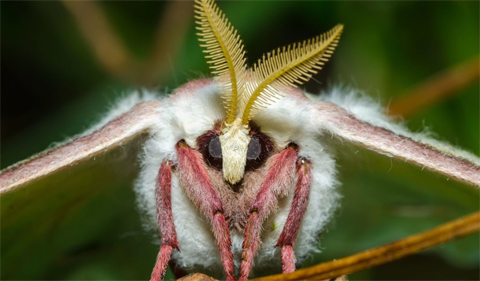
Luna Moth
By Kyle Brooks ’17
Wildlife and Conservation Biology major
As I mentioned in my first post, I am one of the two wildlife interns at Wayne National Forest. Since then, Devon Cottrill—the other wildlife intern—and I have been working our way through the forests outside of Chauncey in search of wildlife and any important habitat features. During our time out in the field, we’ve come across a wide range of interesting insects and arachnids. For this post, I wanted to highlight a few of the more stand-out arthropods that we’ve seen so far.
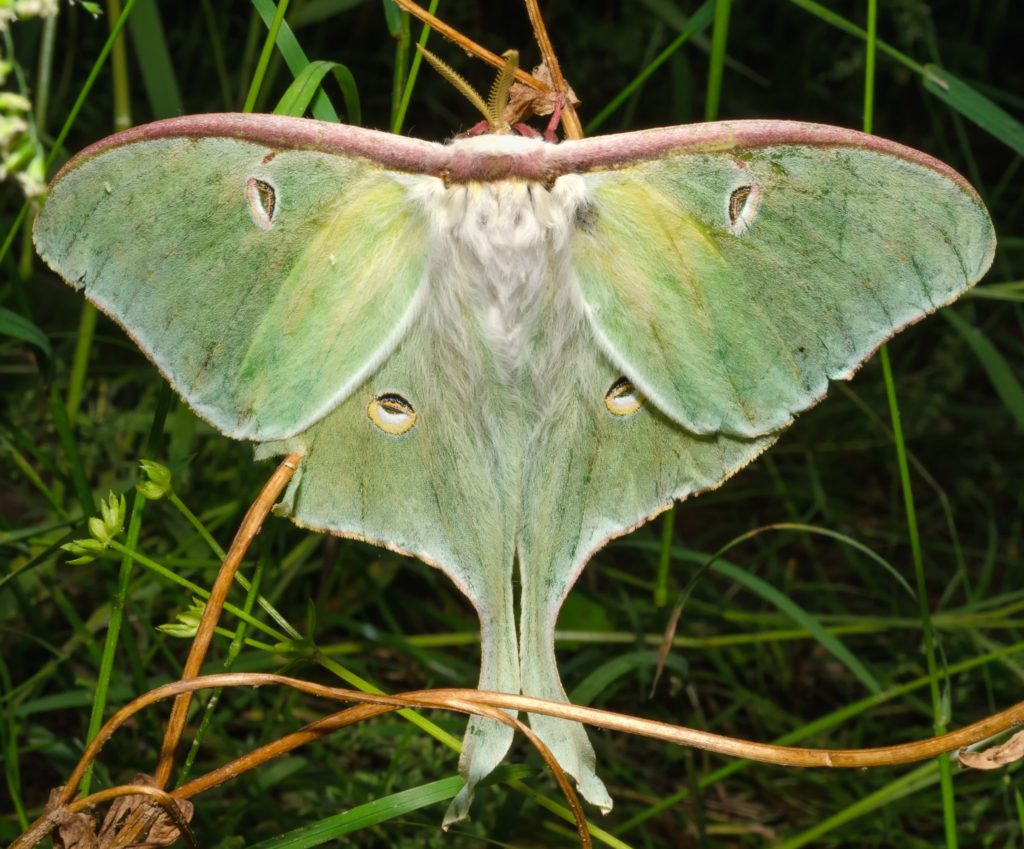
Photo Credit: Wayne National Forest – Ohio University Wildlife Intern Kyle Brooks
I’ll start with an attention grabber. This is a Luna Moth (Actias luna). There are over 1,000 species of moths in Ohio alone, but I would argue that the Luna Moth is one of the most well-known and showiest of the moths in the state. I found this one while on the way to check a bobcat hair snare. He was hanging out in a clump of grass waiting out the daylight hours.
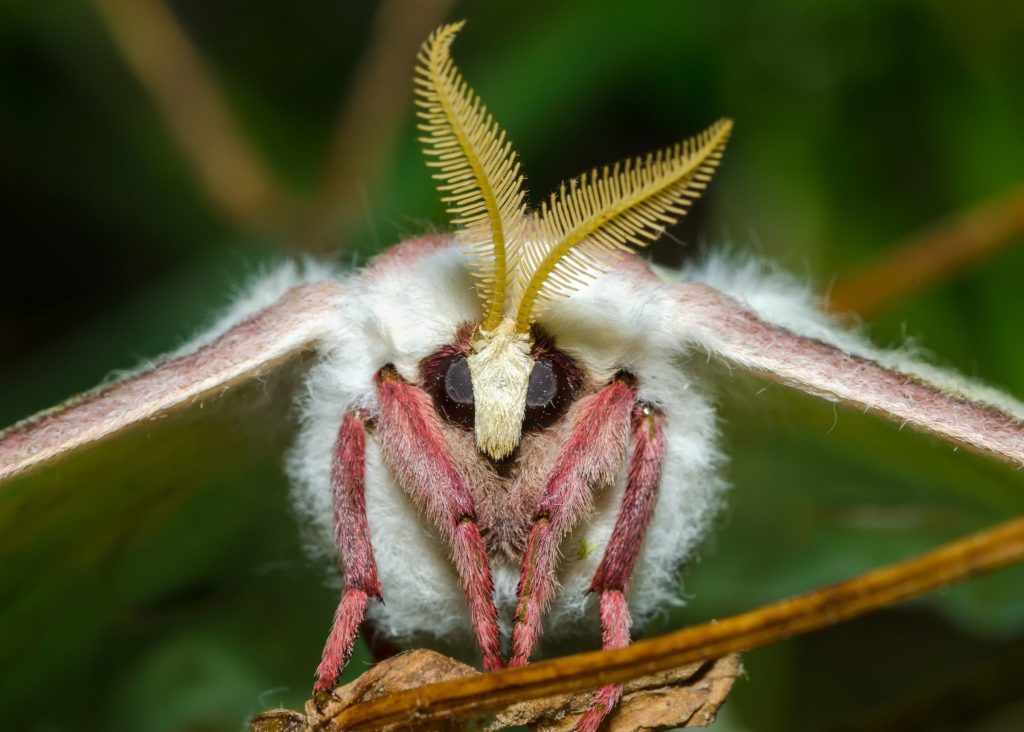
Photo Credit: Wayne National Forest – Ohio University Wildlife Intern Kyle Brooks
I love moths. They’re so much more diverse and abundant than butterflies, but sadly they’re often overlooked. Most people think of moths as the drab, boring cousins of butterflies, and although there are a lot of rather drab moth species, there are also many striking species. The Luna Moth is one such example.
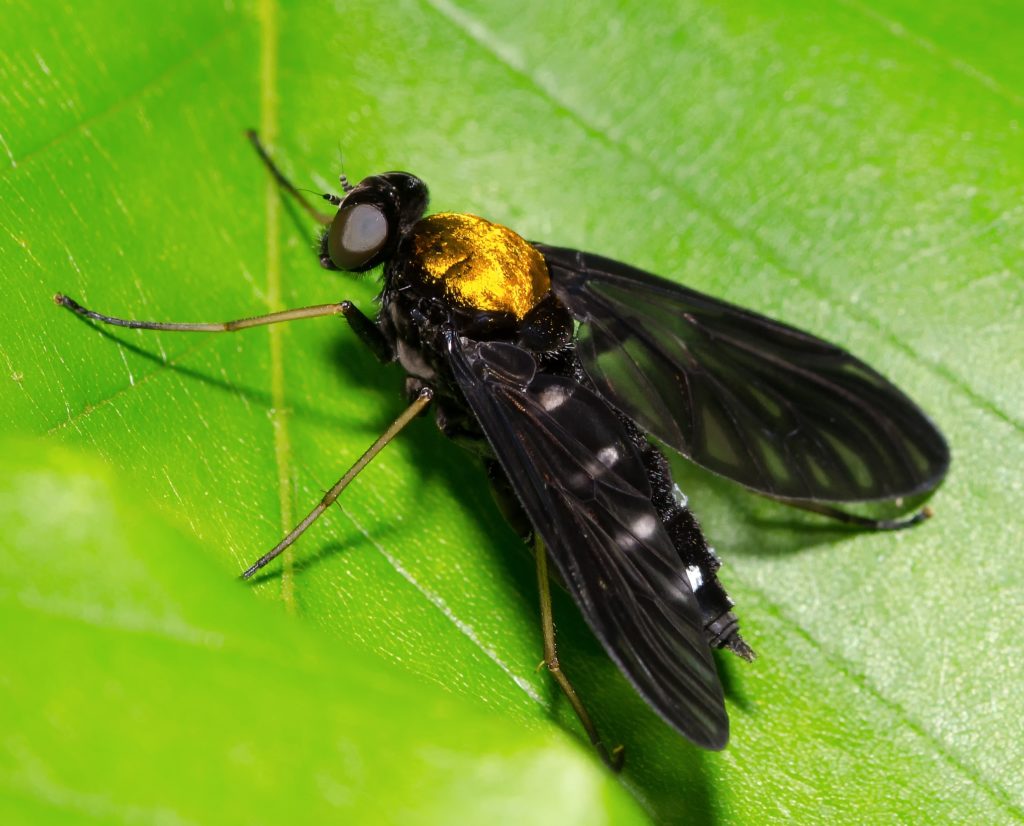
Photo Credit: Wayne National Forest – Ohio University Wildlife Intern Kyle Brooks
Speaking of the often-overlooked, most people pay little attention to flies. The diversity of flies is astounding though, and they come in so many different colors, shapes, and patterns. My favorite fly is without a doubt the Golden-Backed Snipe Fly (Chrysopilus thoracicus). These large flies are very common in the forests of Ohio come late spring and early summer. If you’re ever out on a hike through the woods, keep an eye out for these gold-adorned flies. They will often hang out on leaves that have the Sun shining on them.
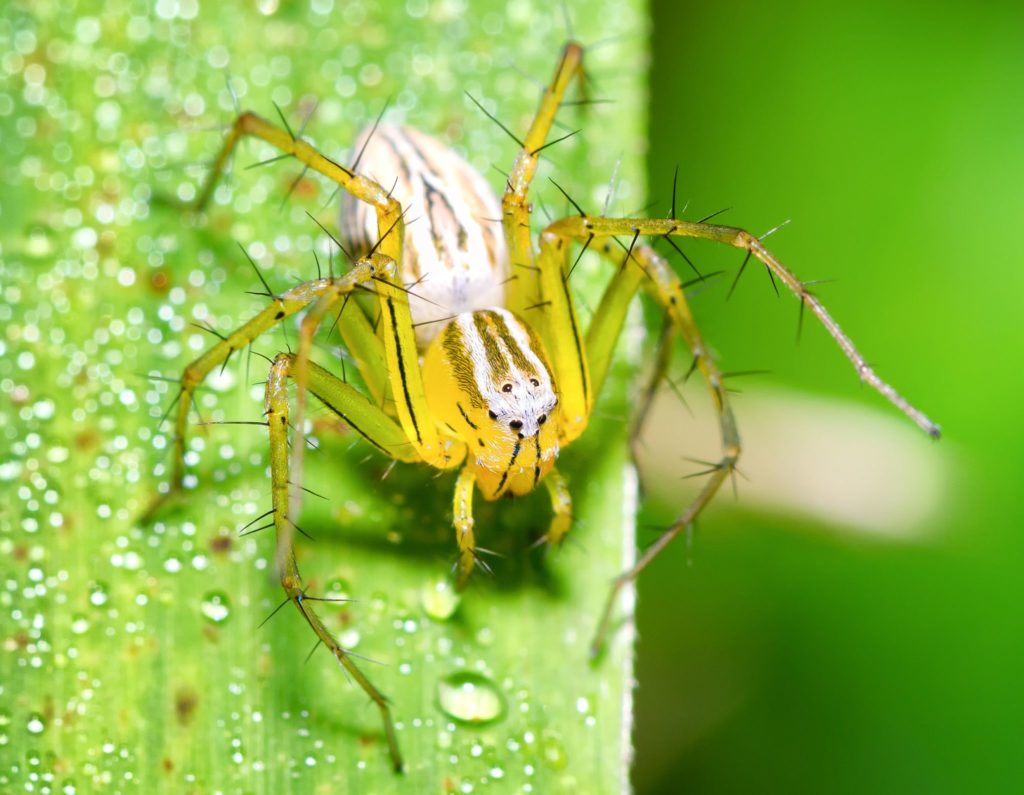
Photo Credit: Wayne National Forest – Ohio University Wildlife Intern Kyle Brooks
What would a post about arthropods be if I didn’t mention at least one spider? I know many people dislike spiders, but I will admit I love seeing them. In fact, I have a love for animals that are unloved and overlooked by most. This tiny, spiky spider is the Striped Lynx Spider (Oxyopes salticus). It might look fierce, but it’s less than 1/4 of an inch long and poses no threat. Well, it poses a threat if you’re a tiny insect, but I highly doubt that description fits you. Lynx spiders are well-known for their spiky leg hairs and striking coloration, and I personally think the Striped Lynx Spider is one of the neatest lynx spiders out there!
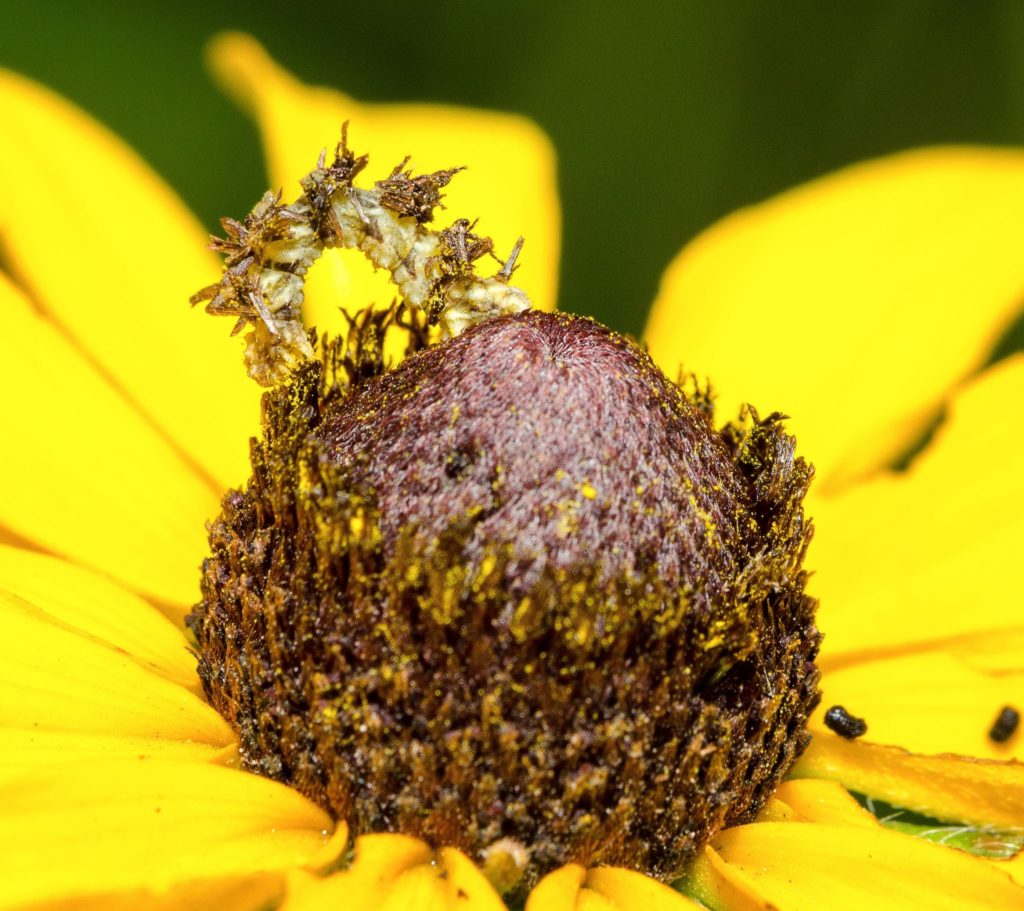
Photo Credit: Wayne National Forest – Ohio University Wildlife Intern Kyle Brooks
Some arthropods are large and conspicuous. Others are small and easily escape our notice. The insect in the photo above falls into the latter group. This is the caterpillar of the Wavy-Lined Emerald (Synchlora aerata), a species of moth. The caterpillar stage of this species—often called the Camouflaged Looper—has an intriguing defense mechanism. This caterpillar feeds on a variety of wildflowers. When they feed, they will tear off little bits and pieces of the flower and stick it onto their body. Their intent is to make themselves look less like a caterpillar, and more like part of the plant. The individual pictured was feeding on a Black-Eyed Susan (Rudbeckia hirta). You can see pieces of the brown middle portion of the flower sticking off of the caterpillar’s body. It was fun to watch this caterpillar feed, as bees would fly in to get nectar and wouldn’t notice the caterpillar. I watched three different bees land directly on the caterpillar before realizing their mistake and running over to the actual flower!
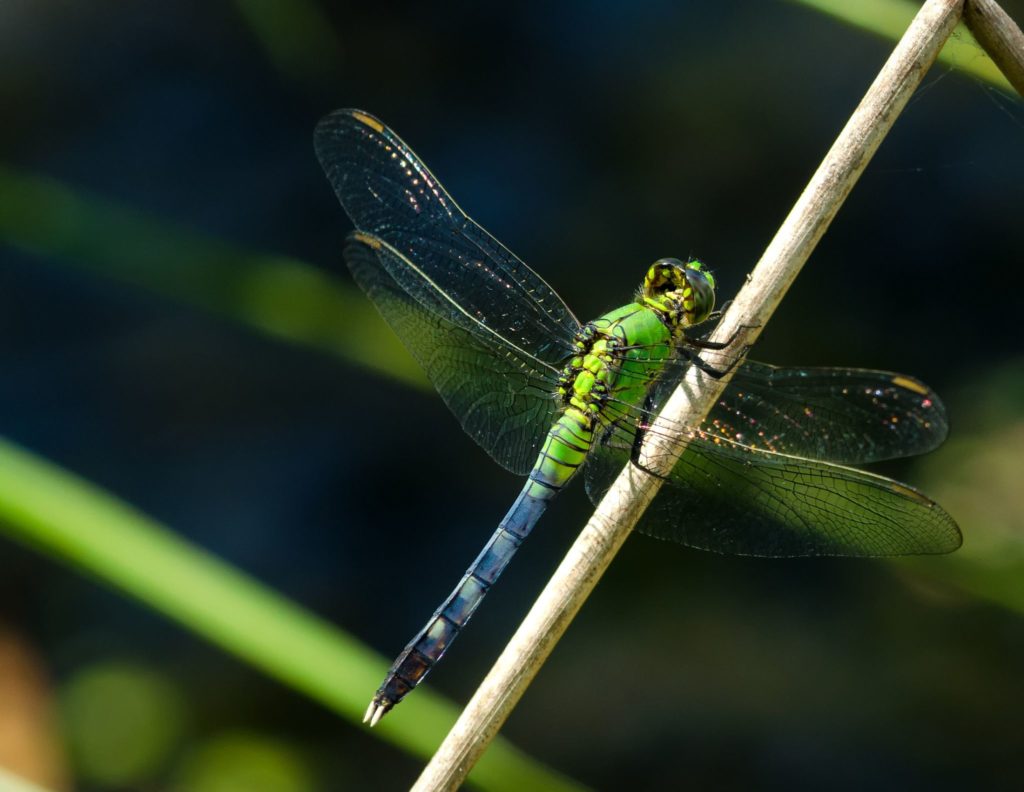
Photo Credit: Wayne National Forest – Ohio University Wildlife Intern Kyle Brooks
One of the large research projects Devon and I are involved in while surveying at Wayne National Forest is the Ohio Dragonfly Survey. The Ohio Dragonfly Survey is a state-wide project that began this year. The aim is to update the official list and distribution of dragonflies and damselflies in Ohio. This project is building off the first Ohio Dragonfly Survey, which occurred from 1991-2001. You can actually get involved with this survey yourself! If you want to learn more information about how to get involved, check out this link to the Ohio Dragonfly Survey website! So far, we’ve found and photographed nine species of dragonflies and damselflies. Most have been really common species, like this Eastern Pondhawk (Erythemis simplicicollis).
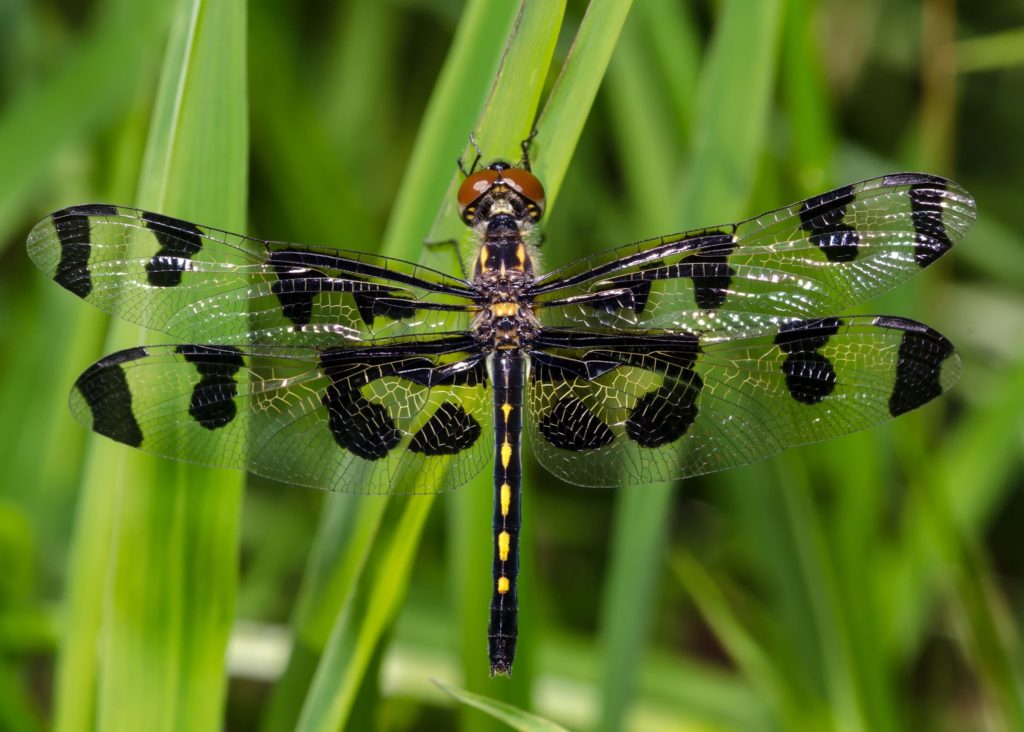
Photo Credit: Wayne National Forest – Ohio University Wildlife Intern Kyle Brooks
A couple species have been more uncommon. In my previous post I talked about how Devon and I found a new population of the state-endangered Blue Corporal. We’ve also found several Banded Pennants (Celithemis fasciata), pictured above. Banded Pennants aren’t state listed in Ohio, but they are relatively uncommon. Ohio is at the northern tip of their range, and they’ve only been recorded in 21 out of Ohio’s 88 counties. The one pictured is a female, as can be told by the presence of yellow dots down her abdomen. The males, on the other hand, will have a dark blue body.
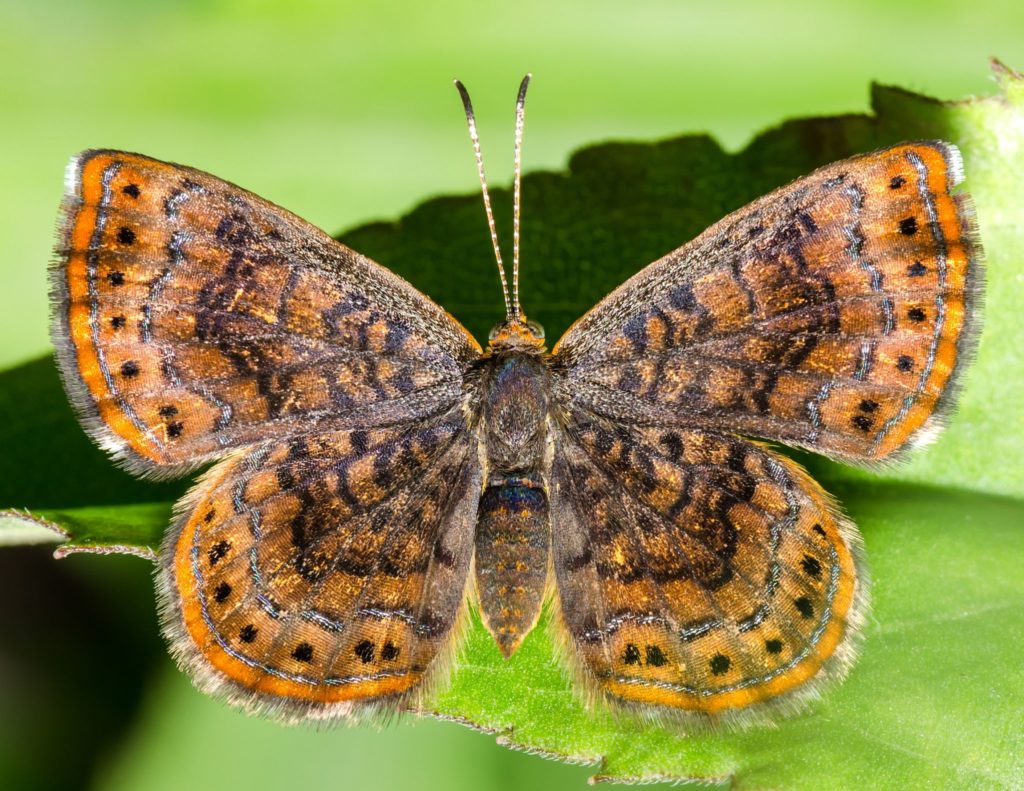
Photo Credit: Wayne National Forest – Ohio University Wildlife Intern Kyle Brooks
I’ll end this post with the Northern Metalmark (Calephelis borealis). The Northern Metalmark is a rather notable butterfly, but not for a good reason. It’s sadly declining across most of its range. The remaining populations are highly isolated and sparse in numbers. Ohio appears to be one of the last strongholds for this species, and for that reason it is currently not listed as threatened or endangered here in the state. Wayne National Forest holds a population of the Northern Metalmark, and Devon and I helped survey part of the population this week.

Photo Credit: Wayne National Forest – Ohio University Wildlife Intern Kyle Brooks
There are three primary causes for the decline of the Northern Metalmark. Habitat destruction and fragmentation, crowding of native wildflowers by invasive plants, and spraying of BtK for Gypsy Moth control have shown to be the main threats to the Northern Metalmark. The population in Wayne National Forest is especially vulnerable to habitat destruction. All the individuals we found were along the sides of roads. Roadsides are great habitats for many butterflies, as sun-loving wildflowers will grow there. However, roadsides like these are often mowed come mid-summer. This cuts down all the blooming wildflowers, removing the food sources for butterflies and other insects. Without food, butterflies like the Northern Metalmark can’t survive. Roadside mowing is a very harmful activity for many native plants and animals. Luckily, more and more places are realizing the damage it causes and are ceasing to mow during the summer! Hopefully this trend continues.
Next time you take a walk outside, take a closer look at all the “bugs” around! You’ll no doubt find something neat wherever you go! Thanks for reading!
– – –
Kyle Brooks is a recent graduate of Ohio University, where he received a bachelor of science degree in wildlife and conservation biology. To read more topics on Ohio nature, visit his blog.





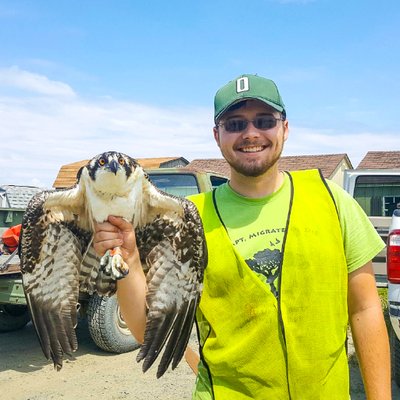













Comments